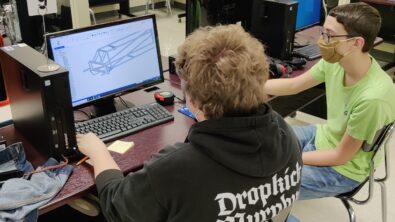Engineers and Creativity

 I had the misfortune a few years back to hear a colleague proclaim at a dinner with about 15 design process professionals in attendance that engineers were not creative people. I can be hot tempered some times, and this was just what it took to get me to react publicly. Engineers are professional problem solvers. We take artsy dreams from other professionals and re-imagine them so they work as intended and can be manufactured at a reasonable price. Creativity is a huge part of practical problem solving.
I had the misfortune a few years back to hear a colleague proclaim at a dinner with about 15 design process professionals in attendance that engineers were not creative people. I can be hot tempered some times, and this was just what it took to get me to react publicly. Engineers are professional problem solvers. We take artsy dreams from other professionals and re-imagine them so they work as intended and can be manufactured at a reasonable price. Creativity is a huge part of practical problem solving.
I’m not sure what kind of people this fellow had worked with (actually I know exactly who he worked with, having interviewed at his firm once), but he was dead wrong about engineers. Well, about most engineers anyway.
After this incident, I did run across a wastewater engineer who confessed to me that she felt that she didn’t have a creative bone in her body. Ok, so it must be true that there are some engineers out there who are not “creative”, but it certainly doesn’t mean that the majority of engineers are like that. It turns out that the word “creativity” can be interpreted in several ways. I think my friend at the dinner had a very narrow interpretation that had mostly to do with shape and appearance, but ignored the creativity it takes to solve the kinds of problems we run up against as we try to bring any given product to market.
Do I have to tote Apple products and wear a purple beret to be considered creative? I certainly hope not. My CAD work for the last 15 years or so has been done mostly taking concepts from industrial designers and making them injection mold friendly. I’ve always felt like it was my responsibility to understand both sides – the artistic and the technical – and to try to improve the design from both directions. For those of you who have done this, getting stuck between these two disciplines is not always a comfortable place to be.
Many solutions I’ve seen mechanical engineers come up with are clearly very imaginative, whether the solution is a mechanical assembly, or or material, or process, or whatever. After this event, the word “creative” has been spoiled for me. Instead I use words like imaginative, inventive, clever, etc (of course leaving out the also overused “innovative”) because they seem more descriptive, and might not get me in trouble with misguided folks from that dinner years ago.
I have observed a lot of workplace conflict between industrial designers and mechanical engineers, having worked in that sometimes uncomfortable space between the two disciplines for a long, and even swapping hats from time to time. The trick to being successful as an engineer working with industrial designers is to bring something special to the table yourself. For a lot of engineers, our gift is understanding the options and creatively solving problems.
For the better part of a decade, I worked as a consultant handling that last phase of CAD work between the idea people and the injection mold people. Sometimes I worked with the industrial designers as an engineer, and sometimes I was functioning as an industrial designer with engineers. Sometimes I had to perform both roles if I was working with an inventor who had no concept of either discipline. So I’ve seen this story from both sides.
In the next few blog posts, I want to write a little about how we as engineers can approach product modeling when your product is already constrained by industrial designer input – and maybe also about how we as industrial designers can understand what the engineers are trying to say. Sometimes designing with/around constraints is easy, and sometimes it isn’t. Sometimes what we are left doing is more modeling rather than design – simply fleshing out the geometry. Sometimes the constraints offered by the ID side don’t take into account some of the realities of the situation, and we have to find a way to guide the project back onto the proper path.
I’ll be writing mainly about the CAD technical aspect, but may also touch on tools you might use to communicate with or to simply understand the perspective of our ID bretheren. I know this can be a controversial topic, but it is also one that needs to be addressed, because it keeps on causing problems.



Comments